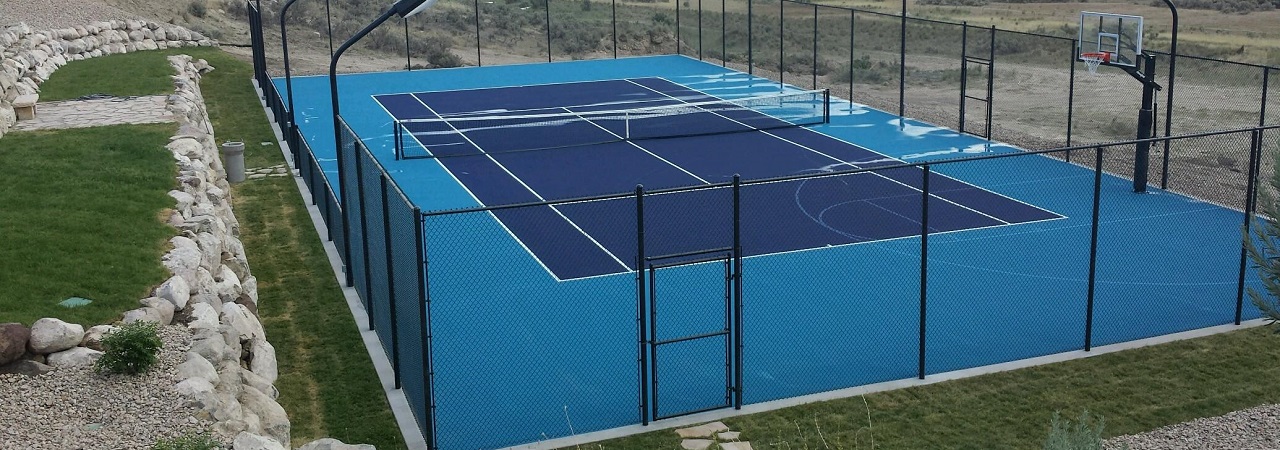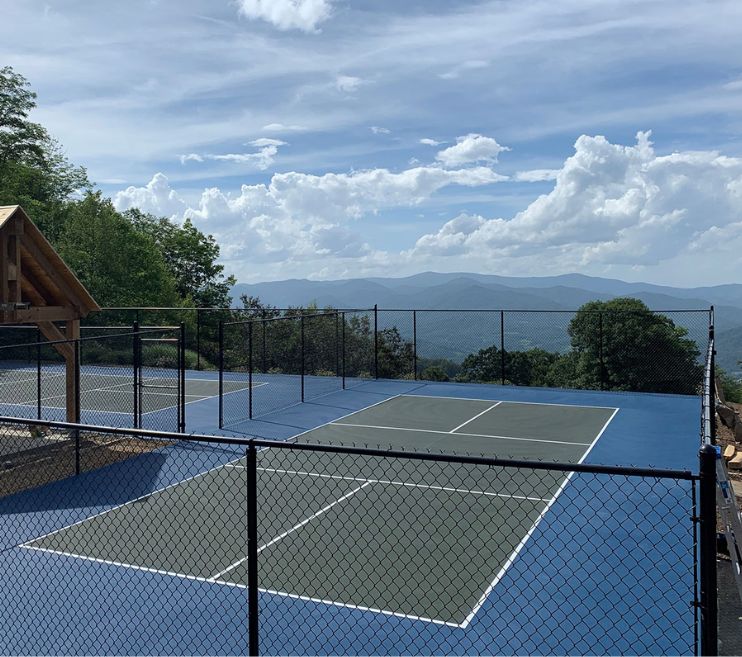Exactly Why Your Next Pickleball Court Ought To Be Built by a Specialist Contractor
A Comprehensive Overview to Designing the Perfect Pickleball Court for All Skill Degrees
Designing a pickleball court that caters to players of differing skill levels demands a diverse strategy, encompassing necessary components such as court dimensions, surface area products, and ease of access attributes. The equilibrium between capability and safety is critical, as is the production of a welcoming atmosphere for both viewers and participants. With the appropriate design options, one can promote an appealing ambience that promotes satisfaction and ability advancement. Pickleball court contractor. However, the details associated with achieving this equilibrium are often ignored. What particular considerations must be prioritized to ensure an effective implementation?

Understanding Court Dimensions
Comprehending the measurements of a pickleball court is crucial for both designers and gamers, as these specs guarantee a regular and fair having fun experience. A standard pickleball court gauges 20 feet broad by 44 feet long for both singles and increases play. The court is split into two equivalent halves by a web that stands 36 inches high at the sidelines and 34 inches at the facility.
Key attributes of the court include the non-volley area, typically described as the "cooking area," which extends 7 feet from the internet on both sides. This area is important for regulating gamer motion and volleying, making sure critical play. In addition, the solution locations on each side of the court are necessary, determining 10 feet wide and 15 feet deep, designed to suit appropriate serving strategies.
Surrounding the court, an area of at the very least 10 feet must be marked as the safety and security area, enabling gamers sufficient space to move and prevent injuries throughout play. Following these dimensions not just promotes reasonable competitors however likewise promotes safety and pleasure for all individuals, making it important for any type of pickleball court layout.
Choosing the Right Surface Area
The option of playing surface for a pickleball court dramatically influences the game's characteristics and gamer experience. Selecting the ideal product is essential for making sure player security, efficiency, and convenience. Common surface areas include asphalt, concrete, and specialized sports floor covering.
Asphalt is a preferred choice because of its cost and sturdiness. It provides a constant having fun surface area however can be hard on joints over extended play. Concrete, while comparable in sturdiness, provides minimal flexibility, possibly resulting in increased influence on players' bodies.
For a much more cushioned experience, lots of centers select specific sports flooring, such as synthetic surface areas or modular tiles. These products usually include shock-absorbing homes, reducing the risk of injuries and improving gamer convenience. In addition, such surface areas can improve round bounce uniformity, which is essential for reasonable play.
When selecting a surface, take into consideration aspects such as environment, upkeep requirements, and the intensity of play. A well-chosen surface area not only boosts gameplay yet also adds to the long life of the court itself. Eventually, recognizing the subtleties of various materials will assist in creating an optimal pickleball environment Learn More customized to numerous skill levels.
Optimal Court Design
An optimal court format is important for making best use of both player performance and viewer satisfaction in pickleball. The dimensions of a conventional pickleball court are 20 feet wide by 44 feet long for doubles play, keeping a clear boundary that boosts gameplay. The internet, positioned at 36 inches high at the sidelines and 34 inches in the center, is important for maintaining the dynamics of the game.
Integrating designated locations around the court for gamers go to website to move easily is vital. A minimum of 10 feet of clearance on all sides of the court is recommended to stop collisions and provide area for viewers. In addition, alignment plays a significant role; the court ought to preferably be straightened north-south to lessen the impact of sunlight glow on players during peak hours.
Noticeable and clear court markings help in gameplay, with contrasting colors for boundaries and non-volley zones that define critical locations for players. Generally, a well-designed court design promotes an engaging setting for both gamers and viewers.

Access Factors To Consider
When creating a pickleball court, making certain accessibility for all players, consisting of those with impairments, is extremely important. A thoughtfully developed court can foster inclusivity and encourage involvement from people of differing capacities.

Access courses to the court need to likewise be carefully prepared. Make certain that pathways resulting in the court are wide sufficient for wheelchair individuals and are equipped with ramps where necessary. Signs ought visit to be large and clear enough to be quickly checked out.
Moreover, seating areas must be designed to allow for easy access to and from the court. This includes supplying designated areas for spectators that might have movement challenges.
Lastly, make certain that bathroom centers nearby fulfill ease of access standards. By taking into consideration these aspects, you can develop a pickleball court that rates and functional for everybody, thus advertising a varied and lively area of gamers.
Maintenance and Upkeep
Appropriate maintenance and maintenance of a pickleball court are vital for making sure optimal having fun conditions and extending the life-span of the center. Routine assessments need to be carried out to determine and deal with any type of problems or wear, such as cracks in the surface area or loosened netting. These issues, if left ignored, can adversely affect gameplay and security.
Surface maintenance is critical; courts need to be cleansed often to get rid of particles, leaves, or dust that can impact traction. For hard courts, routine stress washing is recommended to keep surface honesty and looks. If your court is made from softer products, such as asphalt, resurfacing or securing may be necessary to safeguard against weather-related wear.
In addition, web elevation and tension ought to be inspected routinely, as inappropriate setups can change gameplay. Maintaining surrounding areas, consisting of fence and lights, is similarly essential for making sure a risk-free and satisfying setting.
Verdict
In conclusion, the style of a perfect pickleball court demands a meticulous method that includes correct dimensions, ideal surface area products, and thoughtful design. By adhering to these guidelines, the best pickleball court can be developed, promoting enjoyment and athletic growth for gamers of differing skill levels.
Creating a pickleball court that caters to gamers of differing ability levels necessitates a multifaceted method, encompassing necessary components such as court dimensions, surface materials, and access attributes.Recognizing the dimensions of a pickleball court is important for both designers and players, as these specifications make certain a regular and fair having fun experience.The selection of playing surface area for a pickleball court substantially affects the game's dynamics and gamer experience.An optimal court design is important for optimizing both player efficiency and viewer satisfaction in pickleball. By sticking to these guidelines, the excellent pickleball court can be produced, advertising enjoyment and sports growth for players of differing ability degrees.